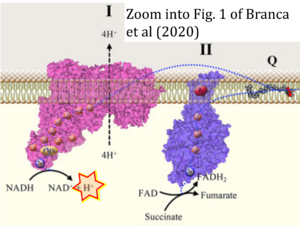Branca 2020 Front Cell Dev Biol
| Branca JJV, Pacini A, Gulisano M, Taddei N, Fiorillo C, Becatti M (2020) Cadmium-induced cytotoxicity: effects on mitochondrial electron transport chain. Front Cell Dev Biol 8:604377. https://doi.org/10.3389/fcell.2020.604377 |
Branca JJV, Pacini A, Gulisano M, Taddei N, Fiorillo C, Becatti M (2020) Front Cell Dev Biol
Abstract: Cadmium (Cd) is a well-known heavy metal and environmental toxicant and pollutant worldwide, being largely present in every kind of item such as plastic (toys), battery, paints, ceramics, contaminated water, air, soil, food, fertilizers, and cigarette smoke. Nowadays, it represents an important research area for the scientific community mainly for its effects on public health. Due to a half-life ranging between 15 and 30 years, Cd owns the ability to accumulate in organs and tissues, exerting deleterious effects. Thus, even at low doses, a Cd prolonged exposure may cause a multiorgan toxicity. Mitochondria are key intracellular targets for Cd-induced cytotoxicity, but the underlying mechanisms are not fully elucidated. The present review is aimed to clarify the effects of Cd on mitochondria and, particularly, on the mitochondrial electron transport chain.
• Bioblast editor: Gnaiger E
Hydrogen ion ambiguities in the electron transfer system
Communicated by Gnaiger E (2023-10-08) last update 2023-11-10
- Electron (e-) transfer linked to hydrogen ion (hydron; H+) transfer is a fundamental concept in the field of bioenergetics, critical for understanding redox-coupled energy transformations.
- However, the current literature contains inconsistencies regarding H+ formation on the negative side of bioenergetic membranes, such as the matrix side of the mitochondrial inner membrane, when NADH is oxidized during oxidative phosphorylation (OXPHOS). Ambiguities arise when examining the oxidation of NADH by respiratory Complex I or succinate by Complex II.
- Oxidation of NADH or succinate involves a two-electron transfer of 2{H++e-} to FMN or FAD, respectively. Figures indicating a single electron e- transferred from NADH or succinate lack accuracy.
- The oxidized NAD+ is distinguished from NAD indicating nicotinamide adenine dinucleotide independent of oxidation state.
- NADH + H+ → NAD+ +2{H++e-} is the oxidation half-reaction in this H+-linked electron transfer represented as 2{H++e-} (Gnaiger 2023). Putative H+ formation shown as NADH → NAD+ + H+ conflicts with chemiosmotic coupling stoichiometries between H+ translocation across the coupling membrane and electron transfer to oxygen. Ensuring clarity in this complex field is imperative to tackle the apparent ambiguity crisis and prevent confusion, particularly in light of the increasing number of interdisciplinary publications on bioenergetics concerning diagnostic and clinical applications of OXPHOS analysis.



